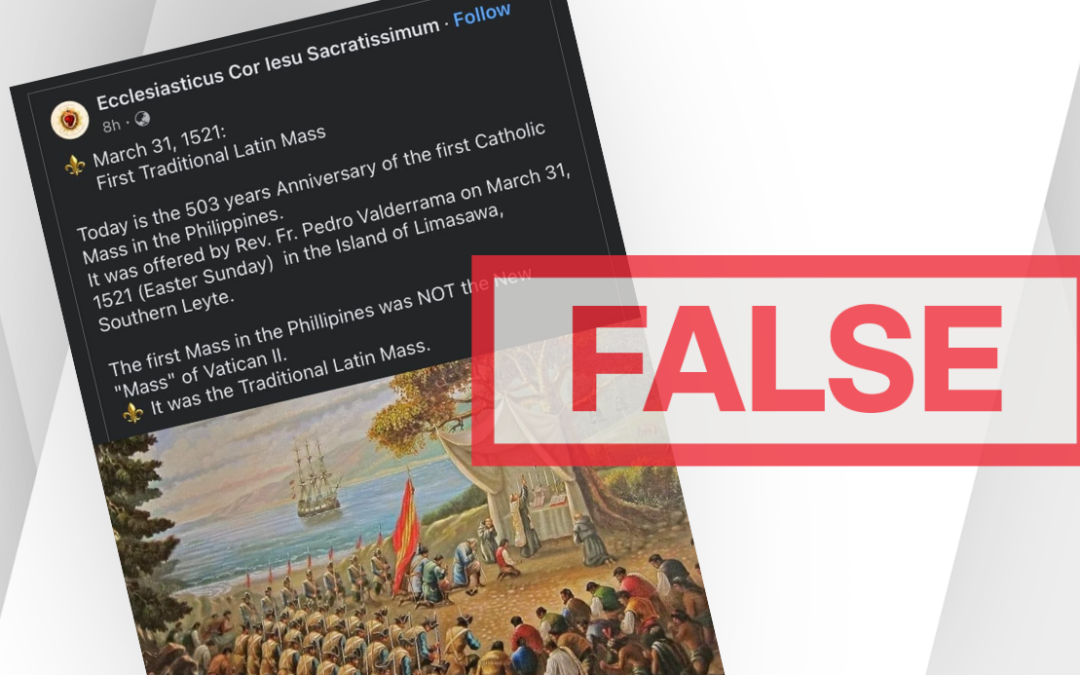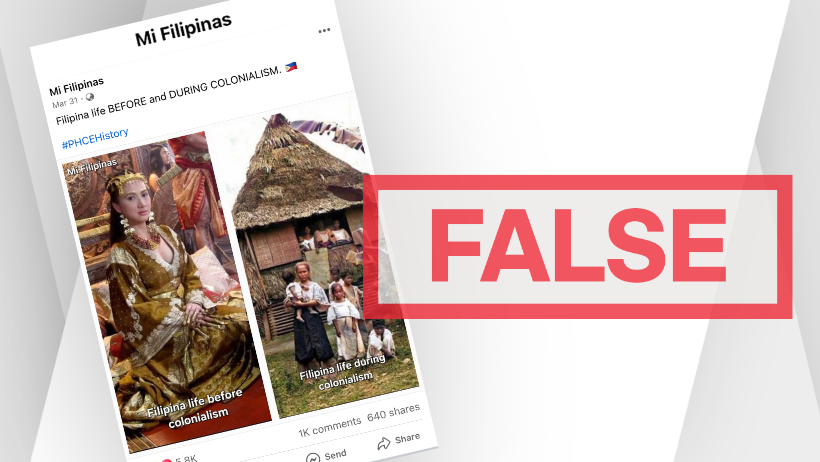A Facebook post used the wrong painting to depict what it described as the first Mass in the Philippines.

CLAIM: Painting of Mass using old Latin rite depicts the first Mass in the Philippines
RATING: FALSE
A Facebook post used the wrong painting to depict what it described as the first Mass in the Philippines.
The account “Ecclesiasticus Cor Iesu Sacratissimum,” which posts religious content, was marking the 503rd anniversary of the first documented Catholic Mass in the Philippines, offered by Fr. Pedro de Valderrama on Easter Sunday, March 31, 1521 at Limasawa Island. Valderrama, an Augustinian missionary, was part of the Magellan expedition that reached the Philippines on March 16, 1521.
The image in the Facebook post, however, is not of the Limasawa Island Easter Mass. It depicts an event that occurred 249 years later — a thanksgiving Mass offered by St. Junipero Serra in Monterey, California, on June 3, 1770.
The post caught the attention of historian Jose Victor Torres, who rejected a separate and unsupported claim that the Limasawa Mass was a traditional Latin Mass.
A Facebook user, Ilius Oyat, who did a Google image search, was the first to point out in Torres’ comments section that the painting depicts the Mass offered by Serra in 1770, not the Limasawa Mass of Valderrama in 1521.
A further search by PressONE.PH found that the image is that of an 1877 painting attributed to French artist Leon Trousset.
Public domain media search engine Picryl describes it as follows: “Father Serra Celebrates Mass at Monterey (oil on canvas). A depiction of Junípero Serra celebrating Mass in Monterey, California on 3 June 1770. The painting depicts Father Serra at the altar surrounded by the members of the Gaspar de Portolà expedition. The altar is placed beneath the Vizcaíno-Serra Oak. The original painting is held in the Carmel Mission museum.”
Another stock image site, Alamy, also ascribes the painting to Leon Trousset.
The original post has been reacted to 487 times and commented on 26 times. It has also been shared 194 times as of this posting. Felipe F. Salvosa II
PressOne.PH is a verified signatory of the Code of Principles of the International Fact -Checking Network (IFCN) at Poynter. The code of principles of the International Fact-Checking Network is a series of commitments organizations abide by to promote excellence in fact-checking. We believe nonpartisan and transparent fact-checking can be a powerful instrument of accountability journalism..
PressOne.PH believes that fact-checking is essential to combating misinformation and disinformation, and in informing and educating citizens and voters. Read more of PressOne.PH’s Fact-Checking Policy by clicking here.
The public is welcome to send feedback or requests for fact-checks at factcheck@pressone.ph.
If you believe PressOne.PH is violating the Code of Principles of the International Fact-Checking Network (IFCN), you may submit a complaint directly to the IFCN website: https://ifcncodeofprinciples.poynter.org/complaints-policy


FACT-CHECK: Facebook post uses wrong painting to depict first Mass in PH
A Facebook post used the wrong painting to depict what it described as the first Mass in the Philippines.

FACT-CHECK: Actress’ photo used in false comparison of Filipina life before, during colonialism
The photo in question is that of the actress Ayen Munji-Laurel, who portrayed the role of ‘Hara Lingayan’ in the primetime historical fiction ‘Amaya’ that aired from 2011 to 2012 on the GMA Network.

FACT-CHECK: Hoax messages raise false alarm over exposure to ‘cosmic rays’
Hoax messages claiming that harmful cosmic rays were set to pass close to earth have circulated anew, coinciding with a rare total solar eclipse in North America on April 8, 2024.


0 Comments